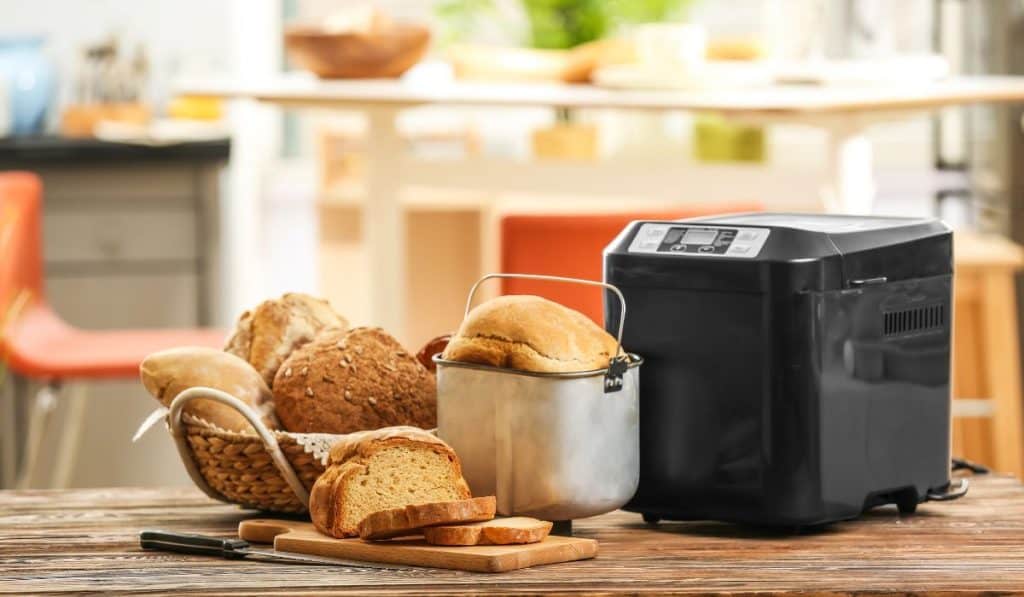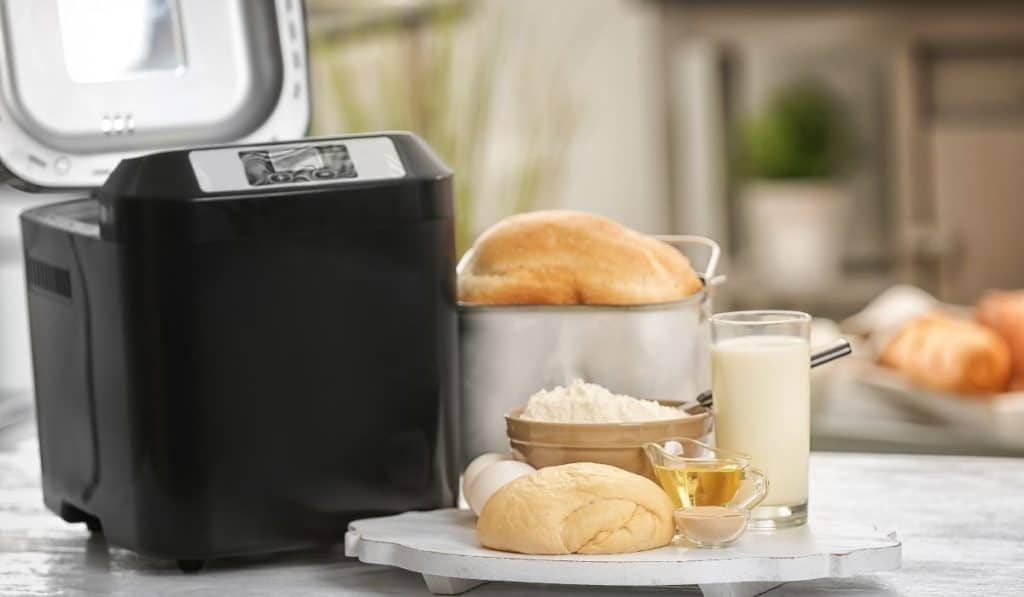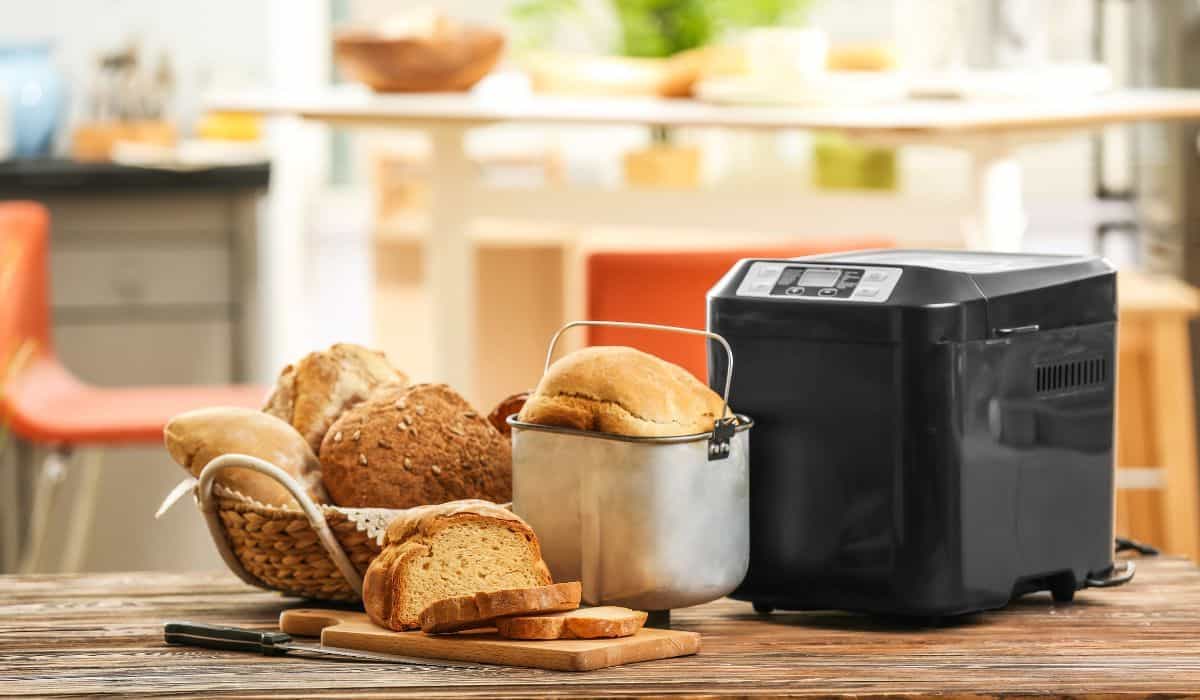If you are looking for a gluten-free bread maker, this buying guide will make sure you get a model that ticks all your boxes.
It’s great that a gluten-free diet does not have to exclude the satisfying taste of hot fresh bread. And with the right bread maker, you can enjoy the convenience and comfort of your favorite loaf every day.
Before you pull out your wallet it is well worth doing a little research to ensure you purchase a great bread maker that will give you fantastic value for money.
We have sone a lot of the hard work for you and tried and tested a few models out. Here’s our quick guide to the latest gluten free bread makers.
Our Recommended Gluten-Free Bread Makers
Stainless Steel Model
- Versatile Functions: With 14 settings, including gluten-free options and the ability to incorporate fruits and nuts, this bread maker provides a wide range of options for creating delicious homemade bread to suit various dietary preferences.
- Large Capacity: This bread maker has a 2lb capacity, allowing you to bake bread in different sizes, accommodating small or large gatherings or satisfying varying hunger needs.
- Easy to Use: The intuitive control panel and clear LCD display make it simple to navigate and select the desired settings. The nonstick pan ensures easy removal of the finished bread for hassle-free baking.
Budget Option
- 🍞12 PRE-PROGRAMMED MENU: This bread machine offers various course settings to choose from which includes: Basic, Gluten-Free, French Whole Wheat, Quick Bread, Sweet Bread, Dough, Cake, Sandwich, Butter Milk Bread, Kneading and Bake – even pizza dough. Plus, it has an audible reminder for adding fruits and nuts.
- 🍰 VERSATILE AND LARGE CAPACITY: The CROWNFUL Automatic Bread Machine Maker features a 3-color crust setting: light, medium and dark crust. It has 2 loaf capacity of 1.5 and 2.0 lb. The five-layer stretch bread pan makes the bread evenly baked. It’s non-stick pan so it’s easy to clean.
Best Online Seller
- 16 preprogrammed menu options, 3 crust colors, and 3 loaf sizes offer over 100 bread, dough/pizza dough, sweet cake and jam choices.
- Low Carb and Gluten-Free preset menu options and recipes. A Cuisinart exclusive!
- Special menu option takes basic dough through several long, slow cool rises for chewier textures and rustic crusts.
Large Capacity
- 3lb Large Capacity: SAKI Bread Maker has 3 bread size settings 2.2 LB, 2.7 LB, and 3.3 LB which makes the largest bread maker among the competitors. Also, SAKI Bread Maker has 3 crust options (LIGHT / MEDIUM / DARK). The display will show the total time according to the selected functions. Designed for professional homemade quality!
- Intelligent Delay Start Function: Add joy to your mornings with SAKI Bread Machine. With an intelligent delay option, you can prepare the ingredients before sleep then hit the delayed timer to start your morning with fresh hot and crusty bread. The bread maker can be delayed up to 15 hours. Your bread is always there for you.
Editors Pick
- FRESH HOMEMADE BREAD IN 3 EASY STEPS: Just add your ingredients to the bread machine, select the cycle and press start.
- YOU CONTROL THE INGREDIENTS & NUTRITIONAL CONTENT: Prepare healthy loaves of bread without preservatives or trans fat using this Hamilton Beach breadmaker.
- VERSATILE WITH 12 CYCLES: Make dough, bake cake, or make delicious mouth-watering loaves of fresh baked bread. Cycles include basic, French, gluten-free, quick bread (no yeast), sweet, 1.5 lb express, 2.0 lb express, dough, jam, cake, whole grain and bake.
Finding the best bread maker for gluten-free bread isn’t always easy – so we have done the hard work for you!
Gluten-free bread comes with its own quirks as you need to replace the gluten that gives regular bread its characteristic springiness and elasticity. You want to be sure that the bread maker you buy does not turn out gluten-free fails.
That’s why we have created this helpful 10 point guide, that should equip you with the information you need to get a bread-maker that does gluten-free right.
Read on for the 10 key areas to look out for to ensure that your bread maker will keep you in an abundant supply of hot, fresh, gluten-free loaves.

1. Buy one with a specific gluten-free setting or pre-set program
Gluten-free bread can be made in a regular bread machine, but the differences in ingredients and preparation mean that you need the correct settings to get a credible loaf.
With regular bread, prolonged kneading activates the gluten in the flour to give the dough its characteristic stretchiness.
With gluten-free bread making, ingredients like xanthan gum are used to reproduce the elasticity so intensive kneading is not needed.
This means that the special gluten-free setting on the bread machine should have a shorter or single kneading cycle compared to the regular settings. Without this, your loaves will be pulverized!
2. Size matters when it comes to gluten-free baking
If your countertop and budget afford, you want to get the largest bread maker you can. This is because gluten-free bread needs space for correct mixing of the altered ingredients.
Better results for gluten-free (easy slicing and good crumb) are obtained with larger loaves. Bread makers are usually classified according to their dimensions and the size of loaf they turn out:
- Compact bread makers have a pan size of around 1 liter in capacity. These smaller machines can be used to produce a small loaf of between 1 and 1.5 pounds (up to 900g) in weight. The footprint of this bread machine is usually around 28 cm by 28 cm – perfect if space is limited. The loaves made with a compact machine tend to have more vertical height.
- Standard bread makers are capable of producing a family-sized loaf weighing up to 1.5 kilograms. The pan capacity will be up to 2 liters.
- Large bread makers are able to make either one large loaf or twin loaves in a double pan. The pan capacity will certainly exceed 2 liters, enough to make a 2 kilo loaf or more! The base dimensions for these bread makers are usually 40 by 30 centimeters, producing a traditional rectangular loaf.
3. Ease of cleaning – can you keep it contaminant-free?
Unless your entire household is gluten-free, using the bread machine for other recipes runs the risk of you coming into contact with gluten from other baking.
The pan is obviously removable, but traces of flour may be secreted in other parts of the machine, and baked on dough may contain allergens.
A bread maker that is easy to thoroughly clean means that you can be confident that it is free of allergens, sanitary, and looks great too.
4.Look for bread makers that have a collapsible or removable paddle
The mechanical paddle within the bread machine does the hard work of mixing and kneading that your hands and a spoon would do. However, this ingenious contraption becomes a hassle when the machine gets round to baking the bread.
Cheaper bread makers will bake your loaf with the paddle projecting upwards into the bread, leaving you with the task of retrieving the paddle and making a hole in your perfect loaf.
To side-step, this issue, look for a bread maker that will automatically collapse the paddle or pause its cycle so the paddle can be removed before baking.
5.Buy a bread maker that you can get a spare pan and paddle for
One of the best ways you can ensure that your baking remains truly gluten-free is to invest in a second separate loaf pan for your gluten-free baking. Look for a bread maker which has spare pans, paddles, and other accessories readily available.
Make sure that your gluten-free items are labeled so that they won’t be used with wheat.

6. A delay timer function makes your bread making even more convenient
If fresh bread is a regular part of your gluten-free diet, a bread maker with a delayed-start function allows you to add ingredients overnight and wake up to a freshly baked loaf.
Good quality contemporary models will have a digital timer and controls that allow a delay of up to 13 hours before commencing the baking cycle.
7. Adjustable crust control allows you to fine-tune the finish of your loaf
For those of you who like your bread to be crusty, some models of bread maker will allow you to vary the crustiness of the baked loaf. You can usually select from three different browning levels to get your bread as light or dark as desired.
8. Viewing windows come in handy
Many contemporary models of bread maker will include a viewing window so you can check on the progress of your loaf, so you can get your loaves just right!
9.Bread maker that can be paused come in handy
If you need dough for pizza or bread rolls your ideal bread maker should be able to run the mixing and kneading stages of the gluten-free program and then be paused to allow retrieval of the dough.
You need to be able to pause the gluten-free cycle rather than any standard dough settings as the handling of the dough will be more appropriate for gluten-free ingredients.
10. How much should you be paying for the best bread maker for gluten-free?
A standard-sized bread maker with pre-set programs that include gluten-free baking will cost at least $150 dollars. Cheaper or budget models tend to lack the range of settings and flexibility of control that you need to get the best out of gluten-free baking with a bread maker.
Good quality bread makers come with at least a 1-year warranty, to provide you with the confidence that your bread maker will be the gluten-free workhorse you need it to be.
If you would like to learn more about bread making then read our complete guide here!





